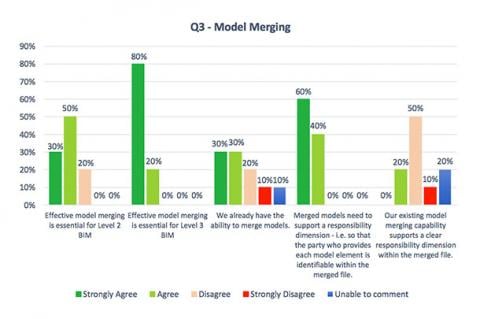A survey of members of the BIM and Integrated Projects Forum has indicated a general feeling that BIM Level 3 is on track and that integrated project teams will be critical to the successful delivery of this next phase of BIM. Members also saw effective model merging as being essential for level 2 BIM.
The results provide a useful snapshot of the current situation as well as pointers to areas where work still needs to be done to support the achievement of key objectives. These include the need to promote – or perhaps even mandate – the adoption of integrated teams to ensure early engagement, reduce project risks and improve outcomes. The underlying message is that there is strong support for changes that will unlock the full value of BIM.
BIM Levels 2 and 3
Around half of the respondents expressed concern about the impact of Level 3 on achieving Level 2, though this was not a concern for the other 50%. However, there was general agreement that Level 3 is largely as expected. At the same time, 70% either ‘agreed’ or ‘strongly agreed’ that Level 3 should include a commitment to ‘Level 2i’, a term coined by the BIM Technologies Alliance, that refers to Level 2 + IFC-based interoperability. Crucially, 90% of respondents felt they would be able to support Level 2 by 2016.

Integrated Project Delivery
There was unanimous agreement that Level 3 needed to include a clear requirement for integrated project teams. At the same time, 70% felt the Government should mandate integrated projects with 100% seeing integrated projects as essential if we are to achieve the savings projected under the 2016 mandate. Similarly, 80% felt integrated projects were also key to achieving the benefits identified in the 2025 Construction Strategy.

Model Merging
Effective model merging was seen by 80% of respondents as being essential for Level 2 BIM, while 100% agreed this was essential for Level 3 BIM. On a practical point, 60% said they already had the ability to merge models and all agreed that merged models should retain reference to who is responsible for each element (60% strongly agree, 40% agree). Only 20% felt their existing merging capability supported a clear responsibility dimension within the merged model.

Overall, the survey yielded some interesting results which have the potential to be of practical benefit to the entire industry as we continue to seek the effective implementation of BIM and Integrated Projects.



